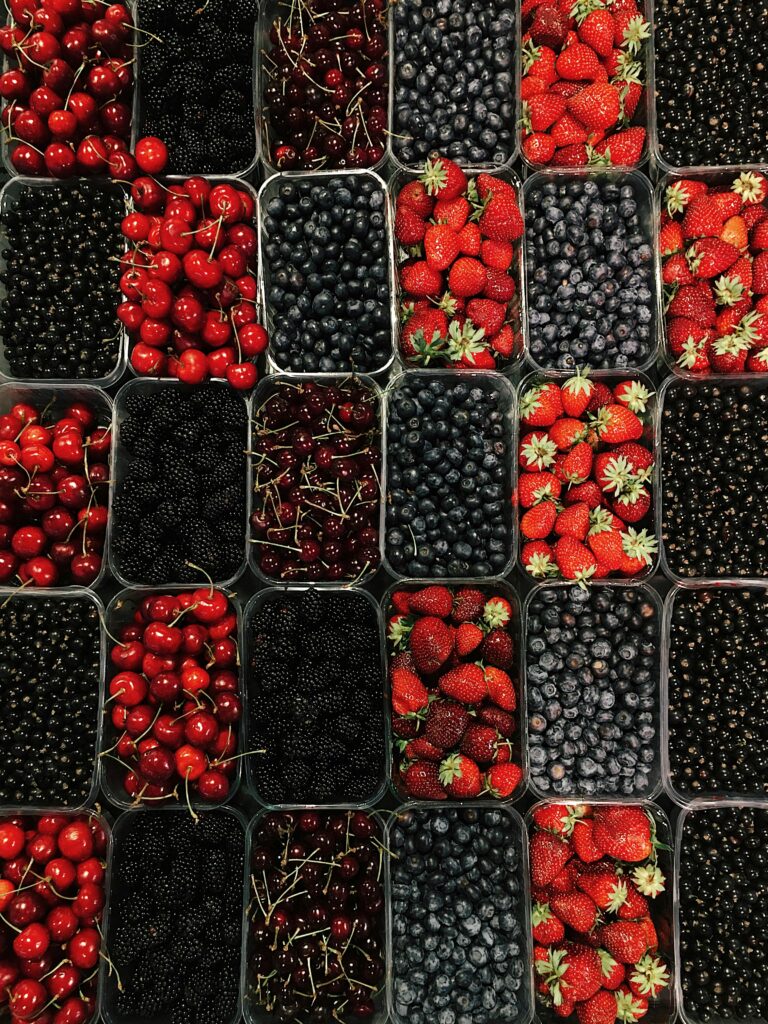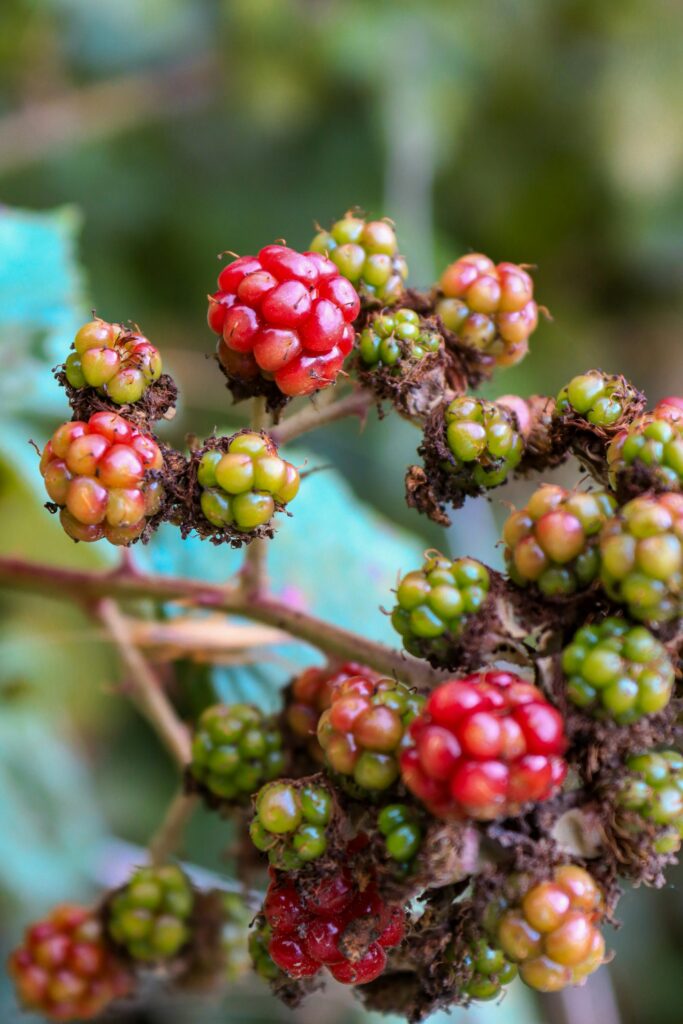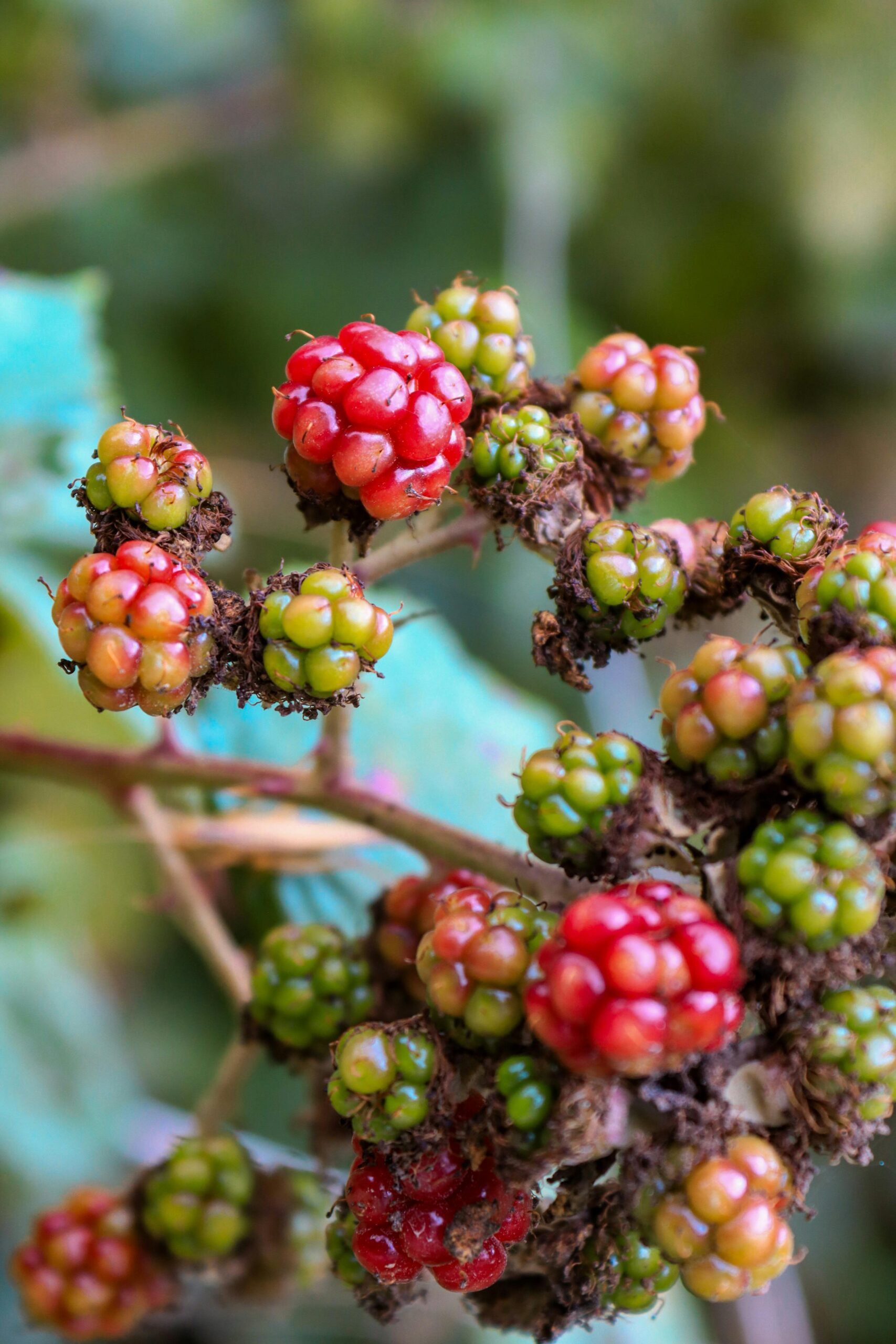Introduction
This is a paragraph.
Did you know that a single cup of dewberries contains only 84 calories but packs over 8 grams of fiber? I’ve been fascinated by these wild blackberry cousins ever since I discovered their incredible weight loss potential! While most people walk past dewberry bushes without a second thought, these purple gems are actually nutritional powerhouses that can transform your approach to healthy weight management. Unlike restrictive fad diets that leave you feeling deprived, incorporating dewberries into your routine offers a delicious, sustainable path to your weight loss goals. From their impressive fiber content to their metabolism-boosting antioxidants, dewberries provide multiple mechanisms for supporting healthy weight reduction while satisfying your sweet tooth naturally.
What Are Dewberries and Why They’re Perfect for Weight Loss
So here’s the thing – I discovered dewberries completely by accident three summers ago when I was desperately trying to find natural alternatives to help with my weight loss journey. I was on one of those weekend hikes, feeling frustrated because my usual berry spots were picked clean, when I stumbled across these weird trailing vines with berries that looked like blackberries but… weren’t quite right.
Turns out I’d found dewberries, and man, did they change my whole approach to healthy eating.

The Real Deal About Dewberries vs Blackberries
Here’s what most people don’t realize – dewberries and blackberries are cousins in the Rubus family, but they’re totally different plants. Dewberries (Rubus flagellaris) grow as trailing vines that literally crawl along the ground, while blackberries grow upright on canes. I spent way too many mornings getting my knees dirty learning this the hard way!
The berries themselves are where it gets interesting for weight loss. Dewberries are typically smaller and have this amazing tart-sweet flavor that’s more intense than blackberries. But here’s the kicker – they’re actually lower in natural sugars, which makes them perfect when you’re watching calories.
Why Your Scale Will Thank You
Let me break down the numbers that got me excited. A cup of fresh dewberries contains only about 62 calories, compared to 84 calories in the same amount of blackberries. That might not sound like much, but when you’re snacking throughout the day, it adds up fast.
The fiber content is where dewberries really shine though. We’re talking about 8 grams of dietary fiber per cup – that’s almost a third of your daily needs right there. I learned this lesson when I first started eating them regularly and suddenly wasn’t reaching for my usual 3 PM snack anymore. The fiber keeps you feeling full for hours, and it slows down sugar absorption so you don’t get those energy crashes.
Vitamin-wise, dewberries pack a serious punch. One cup gives you about 50% of your daily vitamin C needs, plus decent amounts of vitamin K, manganese, and folate. The antioxidant levels are through the roof too – we’re talking anthocyanins, ellagic acid, and quercetin that help fight inflammation.
The Secret Weight Loss Compounds
This is where things get really interesting from a metabolism standpoint. Dewberries contain natural compounds called polyphenols that actually help your body process fats more efficiently. I noticed after about two weeks of adding them to my morning routine that my energy levels were way more stable throughout the day.
The ellagic acid in dewberries has been shown to help prevent fat storage, especially around the midsection. Plus, the natural fruit acids help improve digestion, which was a game-changer for me since I’d always struggled with bloating.
Finding These Little Gems
Here’s where I made my biggest mistake initially – timing. Dewberries ripen earlier than blackberries, usually in late June through July depending on your location. I spent half of August one year looking for them when they were already done!
Look for those trailing vines in sunny spots along fence rows, abandoned lots, or forest edges. The berries start red and turn deep purple-black when ripe. Pro tip: they should fall right into your hand when they’re perfect. If you’re having to tug, they’re not ready yet.
How They Stack Up Against Other Weight Loss Berries
I’ve tried all the “superfruit” trends – goji berries, acai, you name it. But dewberries beat most of them hands down for practical weight loss. Compared to strawberries (49 calories per cup), dewberries have more fiber. Compared to blueberries (84 calories per cup), they’re lower in sugar but higher in certain antioxidants.
The best part? They’re free if you know where to look, unlike those expensive frozen açaí packets that were killing my grocery budget. I still keep a stash of frozen dewberries from my summer picking sessions for my winter smoothies.
Honestly, finding dewberries was one of those happy accidents that completely shifted how I think about natural weight management. Sometimes the best solutions are literally growing wild right under our noses.
How to Incorporate Dewberries into Your Weight Loss Diet
I’ll be honest – when I first started eating dewberries for weight loss, I went completely overboard. I’m talking like two cups a day because I figured if some was good, more had to be better, right? Wrong. I spent three days dealing with, let’s just say, digestive issues that taught me real quick that there’s definitely such a thing as too much fiber too fast.
That expensive lesson led me to figure out the sweet spot for dewberry consumption that actually supports weight loss instead of making you miserable.

The Magic Number That Actually Works
After tracking my results for about six months, I’ve found that 3/4 to 1 cup of dewberries per day hits that perfect balance. That gives you around 6-8 grams of fiber and only 45-60 calories, which is enough to get the metabolism benefits without going overboard on natural sugars.
I split this into two servings most days – about 1/2 cup in the morning and another 1/4 cup as an afternoon snack. This keeps my blood sugar stable and prevents those energy crashes that used to send me straight to the vending machine at work.
Here’s something most people don’t realize though: if you’re new to eating high-fiber foods, start with just 1/4 cup daily for the first week. Your digestive system needs time to adjust, and trust me, you don’t want to learn this lesson the way I did.
Timing Is Everything for Weight Loss
The best time I’ve found to eat dewberries is actually about 30 minutes before meals. The fiber starts working its magic in your stomach, so you feel fuller faster when you sit down to eat. I started doing this before lunch and dinner, and I naturally began eating smaller portions without even trying.
My morning routine now includes 1/2 cup of dewberries with my coffee around 7 AM. By the time I eat breakfast at 8, I’m not starving anymore, so I make better food choices instead of grabbing whatever’s fastest.
The afternoon serving works great around 3 PM when most people hit that energy slump. Instead of reaching for chips or cookies, the natural fruit sugars give me a boost while the fiber keeps me satisfied until dinner.
Getting Creative Beyond Just Eating Them Plain
Look, plain dewberries are great, but eating the same thing every day gets boring fast. I learned this when I almost gave up on them entirely after two weeks because I was sick of just popping them in my mouth like pills.
One game-changer was adding them to my morning oatmeal. I cook steel-cut oats with a pinch of cinnamon, then stir in fresh dewberries during the last minute of cooking. The berries burst slightly and create this amazing purple swirl that makes my breakfast feel way more indulgent than it actually is.
For lunch, I discovered that dewberries work surprisingly well in salads. I toss them with mixed greens, a handful of nuts, and a light vinaigrette. The tartness cuts through rich ingredients like goat cheese or avocado, and the color makes even boring lettuce look Instagram-worthy.
My favorite snack trick is freezing dewberries in ice cube trays with a little water. These dewberry ice cubes turn plain sparkling water into something that feels like a special treat, and they help me drink more water throughout the day.
Smoothie Recipes That Don’t Taste Like Health Food
I’m gonna be real with you – most “weight loss smoothies” taste like punishment. But I’ve perfected a few dewberry combinations that actually make me look forward to drinking them.
My go-to morning smoothie is 3/4 cup frozen dewberries, 1/2 cup unsweetened almond milk, 1 tablespoon ground flaxseed, and a handful of spinach. Sounds weird, but you can’t taste the spinach at all, and the purple color hides it completely. This combo has about 120 calories and keeps me full until lunch.
For post-workout, I blend 1/2 cup dewberries with 1/2 cup Greek yogurt, 1/4 cup water, and a teaspoon of honey. The protein from the yogurt helps with muscle recovery, and the natural sugars from the berries restore energy without spiking my blood sugar like sports drinks used to.
My evening “dessert” smoothie is probably my favorite discovery: 1/2 cup frozen dewberries, 1/4 cup unsweetened coconut milk, 1 tablespoon almond butter, and a sprinkle of cocoa powder. It tastes like a chocolate berry milkshake but has less than 200 calories.
Meal Prep Game-Changers
Sunday meal prep used to be my nemesis until I figured out how to incorporate dewberries in ways that actually saved me time during busy weekdays. The key was learning to work with both fresh and frozen berries strategically.
I prep “dewberry parfait cups” at the beginning of each week. Layer Greek yogurt, a small handful of dewberries, a sprinkle of granola, repeat. These keep for 4-5 days in the fridge and grab-and-go breakfasts that feel way more special than they actually are.
For frozen dewberries, I portion them into 1/2 cup servings in small freezer bags. This makes smoothie prep super fast – just grab a bag, dump it in the blender, and I’m done. No measuring, no waste, no excuses for skipping my morning smoothie.
One trick that’s saved me money is making dewberry “compote” when I have berries that are getting a little soft. I gently heat them with a tiny bit of water and lemon juice until they break down slightly. This keeps for over a week in the fridge and works great stirred into yogurt, oatmeal, or even as a topping for grilled chicken.
The biggest lesson I learned was that consistency beats perfection every time. Having dewberries prepped and ready means I actually eat them regularly instead of letting them sit in the fridge until they go bad. And regular consumption is where the real weight loss benefits happen.
When and Where to Find Fresh Dewberries
Let me tell you about the time I completely missed dewberry season and spent three frustrated weeks searching empty vines. It was my second year foraging, and I’d gotten cocky thinking I knew what I was doing. Turns out, dewberry timing is way more specific than I realized, and missing that sweet spot means waiting a whole year to try again.
That painful lesson taught me everything I know about timing these little gems perfectly.
The Dewberry Calendar Nobody Talks About
Here’s the deal with dewberry seasons – they’re sneaky early compared to other wild berries. In most temperate regions, dewberries ripen between late May and early July, with peak season hitting around mid-June. But here’s what threw me off initially: the timing shifts based on your exact location and that year’s weather patterns.
I keep a simple journal now because I learned the hard way that what works in northern Georgia won’t work in southern Michigan. In warmer zones (7-9), you’re looking at late May through June. Cooler areas might not see ripe berries until July. Last spring was unusually cool, and my usual June 15th picking date got pushed back almost two weeks.
The key indicator I watch for isn’t just the calendar – it’s the berry color progression. Dewberries start green, turn red, then ripen to deep purple-black. When about 30% of the berries on a patch are that dark purple, you know you’ve hit the window.
Plant ID That Actually Keeps You Safe
This part is crucial because there are some plants out there that can make you seriously sick if you mess up the identification. Dewberries grow as trailing vines that sprawl along the ground, not upright like blackberries. The stems are thin, flexible, and covered in small thorns that’ll grab your clothes something fierce.
The leaves are what really give them away though. Dewberry leaves come in groups of three leaflets with serrated edges, kind of like a simplified version of blackberry leaves. I always look for that distinctive trailing growth pattern – if it’s climbing up instead of spreading out, it’s probably not dewberries.
Here’s my safety rule that’s never failed me: if you’re not 100% certain, don’t eat it. Period. I carry a field guide specifically for wild edibles when I’m foraging, and I still double-check anything I’m not absolutely sure about.
The Best Hunting Grounds
After five years of berry hunting, I’ve figured out that dewberries have pretty specific habitat preferences. They love sunny spots with good drainage – think along fence rows, abandoned lots, forest edges, and those weedy areas between farm fields and roads.
My most productive spots are usually south-facing slopes where they get morning sun but some afternoon shade. They seem to thrive in slightly disturbed soil, which is why you’ll often find amazing patches near old homesteads or along hiking trails.
One of my favorite patches is actually behind an old gas station that’s been closed for years. The owner doesn’t mind me picking there, and the berries are incredible because nobody else knows about it. Always ask permission if you’re on private property though – it’s just common courtesy.
Harvesting Without Being a Jerk
This is where a lot of people mess up, and it drives me crazy when I see it. Sustainable harvesting isn’t just about being nice to the environment – it’s about making sure those berries are still there next year for you and everyone else.
My rule is never take more than one-third of the ripe berries from any single plant. I learned this from an old-timer who’d been foraging for decades, and it’s served me well. The plants need those remaining berries to reseed and spread naturally.
I also rotate my picking areas. If I hit a patch hard one week, I’ll give it at least 4-5 days before coming back. This gives new berries time to ripen and doesn’t stress the plants too much.
Always bring your own containers – I use shallow baskets that don’t crush the berries on the bottom. And wear long pants and sleeves unless you enjoy looking like you wrestled with a cat. Those thorns are no joke.
Making Them Last More Than a Day
Fresh dewberries are amazing, but they’re also incredibly fragile. I learned this the expensive way when I spent four hours picking and then watched half my harvest turn to mush within 24 hours because I didn’t handle them right.
First rule: don’t wash them until you’re ready to eat them. The extra moisture speeds up deterioration like crazy. Instead, I gently sort through them, removing any damaged berries or debris, then store them in shallow containers in the fridge.
For short-term storage (2-3 days), I line a shallow container with paper towels and spread the berries in a single layer. Cover loosely with more paper towels. This setup absorbs excess moisture while still letting the berries breathe.
If you’re planning to keep them longer than that, freezing is your best bet. I spread them on cookie sheets, freeze them individually, then transfer to freezer bags. This way they don’t all stick together in one giant clump. Frozen dewberries work great in smoothies, though they’ll be pretty mushy if you thaw them for eating fresh.
The biggest mistake I see people make is cramming too many berries into deep containers. They get crushed under their own weight and spoil fast. Keep those containers shallow, and your berries will thank you for it.
Conclusion
Dewberries offer an exciting, natural approach to weight loss that doesn’t require extreme restrictions or expensive supplements. Their unique combination of fiber, antioxidants, and low calories makes them an ideal addition to any weight management plan! By incorporating these nutrient-dense berries into your daily routine, you’re not just working toward your weight loss goals – you’re nourishing your body with powerful compounds that support overall health. Remember, sustainable weight loss is a journey, not a destination. Start small by adding a handful of dewberries to your morning routine or afternoon snack, and gradually build them into more meals as you discover your favorite ways to enjoy them. Your taste buds and your waistline will thank you for making this delicious, natural choice!
